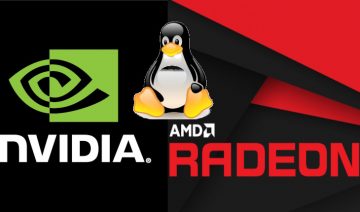1. Mint
In the #1 place this year is – Linux-Mint, for its out of the box media support, unique Cinnamon desktop environment and above all – its community attendance.
For those who haven’t yet had the honor, I’d like to note that Mint is doing a great job in listening to its users and improving features according to their requests – a trait which is far too often being ignored of by many other well established distros.
The distro even has an “Ideas pool” page where signed visitors can search and submit ideas for the developers to implement. (- how awesome is that?)
Being highly popular is yet another one of Mint’s advantages, since greater community means you have more testing hands and better chance to get answers for your questions.
beyond that, Mint’s new release model, i.e. a release of a series of consecutive versions (17, 17.1, 17.2, etc…) which gets 2 years of applications backporting during that time, is also ensuring that the distro would be well tested during that period.
Apart from that, it seems that Mint is also taking system maintenance to the next level (at least in Linux terms), its improved Update Manager ranks updates by ‘safety’ level and now also removes cluttering by joining number of interrelated packages into one.
For all of this and more, Mint is highly worthy of participating in this year’s Top 5 Linux distros list, not to say lead it. wouldn’t you agree?
More about the latest release of Mint: Linux Mint 17.1 “Rebecca” Released! So What’s New?
Honorable Mentions:
As in last year, this year too were some distros which were very close to make it to the list however, mostly for technical reasons, they couldn’t quite make it.
Gentoo
The ultimate power-users distro, it is the most popular source based Linux distribution (and also my favorite) which lets its users control every aspect of which it’s comprised to a fine-grained level.
Gentoo allows its users to compile every package they install on it using a special package manager called Portage.
Given specific configuration parameters, inserted in a Portage designated file, the PM can install software built specific to its owners needs and hardware capabilities, making it a highly optimized system.
However, with ‘great control comes greater headache’ – just kidding :P, but seriously, compiling from source has its price and it is, depends on your processor’s speed, installing software may take a while and patience from the user.
So, although it can be installed on the highest number of different architectures possible, the amount of compilation time of a Gentoo system should be taken into account, especially with older / weaker CPUs.
Moreover, add to that the level of knowledge required to install Gentoo in the first place, and this forms the primary reasons why Gentoo couldn’t get to this year’s list.
Read more about the reasons for Why Use Gentoo?
Fedora
The reason Fedora is not on this year’s list is because it seems the main target-audience of the distro are primarily companies and businesses and not so much home-users per se.
To justify my claim, I shall point you to Fedora’s own website where you’ll note that upon downloading the distribution you are given only 3 main options to choose from: Cloud, Server and Workstation. (at time of writing this)
I shall argue that non of these aliases is much of an attraction to home users whatsoever.
One more, double edged sword regarding to Fedora is the strong affinity it has towards using latest and greatest technology, though it’s much compelling to use the latest features possible, there’s also a risk of compromising stability over it.
Nevertheless, Despite all that, there’s also a good reason why Fedora is getting an honorable mention in here as well and that’s because if you’re a GNOME DE enthusiast, I can’t think of any better supported distro to go with than Fedora.
If you haven’t heard about it before, it might interest you to know that most of nowadays contributions to GNOME are made by Fedora / Red Hat (Fedora’s owners) employees.
So if there’s any GNOME feature you wish to make use of, most chances are you’ll find it in Fedora.
Deepin
A distribution which is both beautiful and highly functional, Deepin leaves many other distributions far behind.
Its home-made desktop environment called DDE or Deepin Desktop Environment which is based on HTML 5 technologies, is one of the most beautiful DEs currently exists on Linux platform.
Coupled with some more home-grown applications, like Deepin Software Center, DMusic and DPlayer, it’s the average user dream Linux distro.
Nevertheless, Deepin is still relatively new in the Linux scenery and currently feels like it has a little bit more maturing to do before it’s ready to be in the top 5.
Hiccups and bugs that may be encountered on a little more than occasional instances are the primary key reason for it’s not yet being on the list.
But in time, it surely could be.
For a review of Linux Deepin, check out: Linux Deepin Review.









